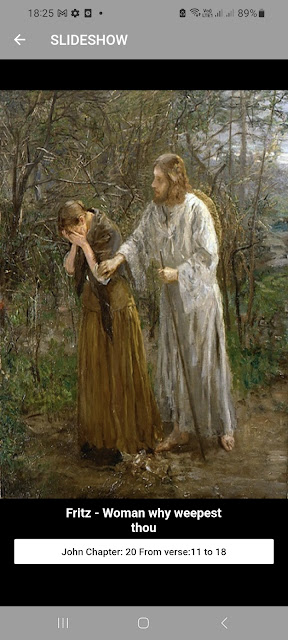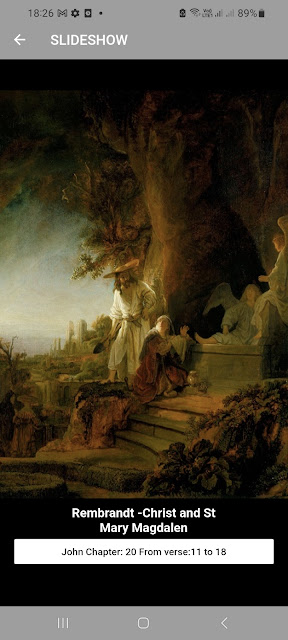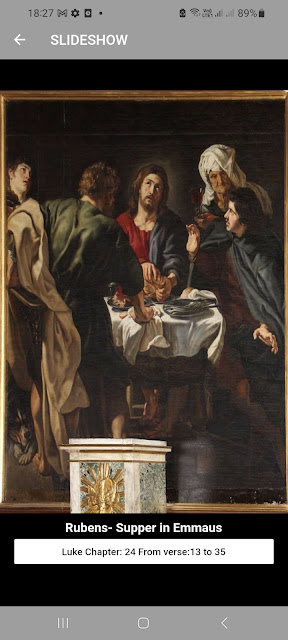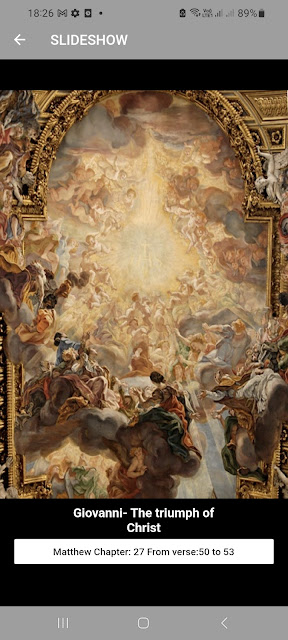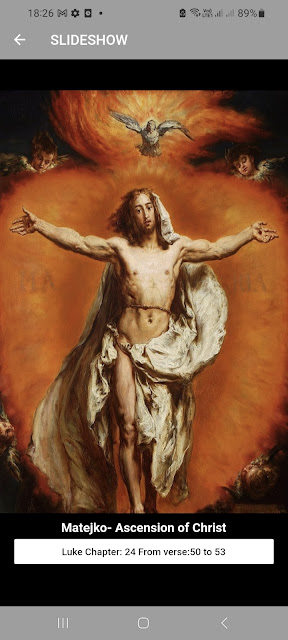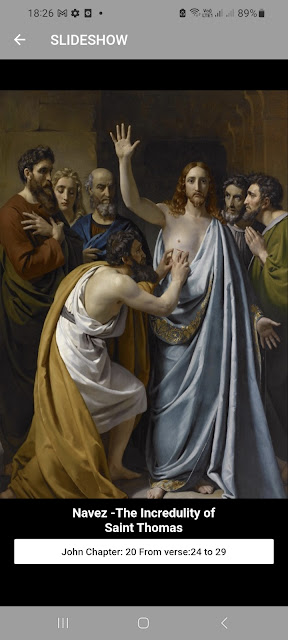Our Famous Catholic Paintings app has about 1,000 paintings by master painters from the Renaissance period to more recent times. The originals are to be found in museums and galleries all over the world. We have a sample with short commentaries below:
a) Catholic Bartolome Descent of Christ into Limbo Luke 24:1-8
The belief that Christ descended into Limbo on Holy Saturday is a teaching of the Catholic Church based on tradition and scripture. This doctrine teaches that after his death on the cross, He descended into the realm of the dead to proclaim the Gospel and free the souls of the righteous who had died before his resurrection, including Adam and Eve, the prophets, and other faithful individuals.
This event is not explicitly mentioned in the Gospels, but it is referenced in several New Testament passages, including 1 Peter 3:18-20 and Ephesians 4:8-10. The Catechism of the Catholic Church affirms this belief and teaches that his descent was a necessary part of his saving work, as it completed his journey to the dead and prepared the way for his resurrection and the opening of the gates of Heaven to all the righteous who had died before him.
The descent is traditionally celebrated on Holy Saturday, the day between Good Friday and Easter Sunday, in the Catholic Church. This day is seen as a time of waiting and anticipation for the resurrection, and the belief in Christ's descent into Limbo is an important aspect of the Church's teaching on salvation and redemption.
The creeds of Anglicans, Catholics and Presbyterians seem to agree on this point... "suffered under Pontius Pilate, was crucified died and was buried, he descended into hell, on the third day, he rose again from the dead..." So its not just Catholic doctrine, but I think extends to the more traditional denominations that were initially affiliated to the Catholic church.
b) Catholic Fritz Woman why weepest thou? John 20:15
Hunt - Christ and the two Marys
The phrase "Woman, why weepest thou?" is from the New Testament, specifically John 20:15. In this passage, Mary Magdalene has gone to the tomb on the morning after his crucifixion, only to find that his body is not there.
Mary is distraught and weeping when she encounters a man whom she believes to be the gardener, but who is, in fact, the risen Jesus. The man asks her, "Woman, why weepest thou? Whom seekest thou?" Mary, still thinking that he is the gardener, responds by asking him if he knows where the body has been taken.
It is only when the Lord calls her by name, does she realize who he is. This encounter is a significant event in the Christian faith, as it is one of the first appearances of the resurrected Christ. The phrase "Woman, why weepest thou?" is often used as a reminder of the comfort and hope that He can bring to those who are suffering or struggling with loss.
c) Fugel Jesus on the way to Emmaus Luke 24:13-35
Luke 24:13-35 tells of two disciples who were travelling from Jerusalem to Emmaus on the day of Jesus' resurrection, discussing the events of his death and burial. As they walked, a stranger joined them and asked what they were discussing. The disciples were surprised that he was unaware of the recent happenings around Jesus. The stranger, who remained unrecognizable to the disciples, began to explain to them the prophecies of the Old Testament that pointed to the Messiah's suffering and death. As they arrived at Emmaus, the disciples invited the stranger to stay with them for the night.
During their meal, the stranger took bread, blessed it, and broke it, at which point the eyes of the disciples were opened and they recognized that it was the Lord who had been with them all along. He then disappeared from their sight. The disciples, amazed and excited, rushed back to Jerusalem to share the news with the other disciples, who also confirmed that He had appeared to Peter.
b) Giovanni The Triumph of Christ Acts 1:9-11
Matejko - Ascension of Christ Acts 1:9-11
The Ascension marks the moment when the Lord, after his resurrection, ascended to Heaven... to be seated at the right hand of God the Father...... as we state in the apostles creed.
According to this account, after spending forty days with his disciples following his resurrection, He led them out to the vicinity of Bethany. There, he blessed them and was taken up into Heaven, disappearing from their sight.
The Ascension is seen as a crucial aspect of His redemptive work. It signifies the completion of his mission on earth and his return to his rightful place in Heaven. Its also seen as a promise of Christ's eventual return to earth, as the angels in the account tell the disciples that he will return in the same way he left.
The Ascension is celebrated on Ascension Day, which falls forty days after Easter Sunday. It is a day of joy and thanksgiving, commemorating the completion of Christ's earthly ministry and the promise of his return. The Ascension also holds significance as it represents the final triumph of Christ over sin and death, and serves as a reminder of the hope and salvation that he offers to all who believe in him.
e) Navez The incredulity of St Thomas John 20:24-29
This is the story of Thomas's incredulity, better known as "Doubting Thomas". According to the Gospel of John, Thomas was not present when the resurrected Jesus appeared to the other disciples. When they told him about it, he expressed doubt, saying that he would not believe it until he saw the wounds for himself.
A week later, the Lord appeared to the disciples again, and this time Thomas was present. Jesus invited him to touch his wounds and believe, and Thomas responded with the famous declaration, "My Lord and my God!" (John 20:28). Christ also used the occasion to state the blessing, for those who believe without seeing. This is the faith we enjoy today, we have been told, but in reality, we have not seen it.
The phrase "doubting Thomas" has since been used to refer to someone who is sceptical or hesitant to believe something without direct evidence or proof.
Enjoy



